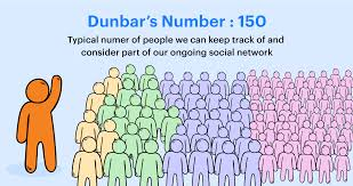Corporate Culture
The Only Strategic Asset You Control
The Only Strategic Asset You Control
Never before in the history of companies and their competitive appearance on the market, are the functions of Marketing, Public Relations and Human Resources so similar and close to one another, and the need for their integrated application in the creation of competitive advantage has never been expressed more clearly than now with the concept of corporate communications.
The interdisciplinary approach to corporate communications strives to build an identity, a corporate culture, with which companies express who they are and the means of storytelling to reach the intended stakeholders.
Corporate Culture - An Imagined Order
The norms which sustain and drive corporate cultures are neither ingrained instincts nor personal principles of justice or romantic desires to fulfill ones potential. Instead, strong corporate cultures, that unite large groups to collaborate on the fulfillment of a single vision, are based on shared myths.
Myths are simply imagined orders that exists in the imagination and shared communication networks linking the subjective consciousness of the group. An imagined order – and I quote Yuval Noah Harari – means in his words: “humans believe in a particular order not because it is objectively true, but because believing in it enables us to cooperate effectively and forge a better society”. The corporate form of business is itself an example of an imagined order based the the shared beliefs of most of the world's people in the myths of laws, currency and nations whose purpose is driven by the ideology of capitalism.
The imagined order which governs the success or failure of a corporation achieving its daily mission and long term vision is its corporate culture. In a recent TechCrunch article on culture, MIT professor Bill Aulet quotes IBM’s legendary leader Lou Gerstner as saying: “in the end, an organization is nothing more than the collective capacity of its people to create value.” The leaders of the corporation are responsible for creating and managing the complex organization required to create and maintain the myths that define the corporate culture. Without a clearly defined corporate culture a company cannot be sustained let alone thrive.
The interdisciplinary approach to corporate communications strives to build an identity, a corporate culture, with which companies express who they are and the means of storytelling to reach the intended stakeholders.
Corporate Culture - An Imagined Order
The norms which sustain and drive corporate cultures are neither ingrained instincts nor personal principles of justice or romantic desires to fulfill ones potential. Instead, strong corporate cultures, that unite large groups to collaborate on the fulfillment of a single vision, are based on shared myths.
Myths are simply imagined orders that exists in the imagination and shared communication networks linking the subjective consciousness of the group. An imagined order – and I quote Yuval Noah Harari – means in his words: “humans believe in a particular order not because it is objectively true, but because believing in it enables us to cooperate effectively and forge a better society”. The corporate form of business is itself an example of an imagined order based the the shared beliefs of most of the world's people in the myths of laws, currency and nations whose purpose is driven by the ideology of capitalism.
The imagined order which governs the success or failure of a corporation achieving its daily mission and long term vision is its corporate culture. In a recent TechCrunch article on culture, MIT professor Bill Aulet quotes IBM’s legendary leader Lou Gerstner as saying: “in the end, an organization is nothing more than the collective capacity of its people to create value.” The leaders of the corporation are responsible for creating and managing the complex organization required to create and maintain the myths that define the corporate culture. Without a clearly defined corporate culture a company cannot be sustained let alone thrive.
Corporate Culture - The Only Competitive Advantage You Control
Culture is the imagined order that differentiates your company and your employees from your competition. Your culture is the belief system that binds your employees, shareholders and customers around a single purpose defined as within the company vision and allowing for company growth. It is a strong culture that creates the sense of belonging which attracts and retains premier talent, employees and loyal customers. With employees now working remotely more and more, this effort to provide a central sense of community is even more critical as the face to face social communications systems are replaced with avatars.
In fact, we know that the imagined order of culture, defined by company leadership, is an essential component to a company's growth beyond about 150 employees, commonly referred to as the Dunbar's Number after famed British anthropologist Robin Dunbar. The threshold of successful group collaboration beyond 150 remains true for early hunter-gatherer societies as well as offices and factories. Exceed 150, and a network is unlikely to last long or cohere well without an imagined order that binds them with shared myths in a system which organizes groups into common shared missions limited in size to about 150 people.
To break through the growth barrier of about 150 people, you need an imagined order in the form of a defined corporate culture. According to a 2015 article in Harvard Business Review, a positive corporate culture helps companies achieve significantly higher organizational effectiveness, including increased productivity, employee engagement, financial performance, and customer satisfaction. A strong culture boosts commitment and engagement while fostering collaboration, communication, and teamwork—which translates to a positive employee experience and a buoyant bottom line.
Companies don’t make the impossible possible by following the playbook of everyone else before them. They grow beyond 150 people and succeed explicitly because their organization is defined by a different set of beliefs than others, and that they are bound to deliver upon that promise. It is the sense of believing in and belonging to the higher purpose defined by your corporate culture which permits companies to break through growth barriers. Organizations that inspire their employees with a defined culture of open bi-lateral communications, defined expectations on what it means to work in the culture, clear rewards for ingenuity and innovation with known consequences for failure can expect more of their team and achieve more collectively, and your products, marketing approach, and customers benefit from that commitment.
Culture is the imagined order that differentiates your company and your employees from your competition. Your culture is the belief system that binds your employees, shareholders and customers around a single purpose defined as within the company vision and allowing for company growth. It is a strong culture that creates the sense of belonging which attracts and retains premier talent, employees and loyal customers. With employees now working remotely more and more, this effort to provide a central sense of community is even more critical as the face to face social communications systems are replaced with avatars.
In fact, we know that the imagined order of culture, defined by company leadership, is an essential component to a company's growth beyond about 150 employees, commonly referred to as the Dunbar's Number after famed British anthropologist Robin Dunbar. The threshold of successful group collaboration beyond 150 remains true for early hunter-gatherer societies as well as offices and factories. Exceed 150, and a network is unlikely to last long or cohere well without an imagined order that binds them with shared myths in a system which organizes groups into common shared missions limited in size to about 150 people.
To break through the growth barrier of about 150 people, you need an imagined order in the form of a defined corporate culture. According to a 2015 article in Harvard Business Review, a positive corporate culture helps companies achieve significantly higher organizational effectiveness, including increased productivity, employee engagement, financial performance, and customer satisfaction. A strong culture boosts commitment and engagement while fostering collaboration, communication, and teamwork—which translates to a positive employee experience and a buoyant bottom line.
Companies don’t make the impossible possible by following the playbook of everyone else before them. They grow beyond 150 people and succeed explicitly because their organization is defined by a different set of beliefs than others, and that they are bound to deliver upon that promise. It is the sense of believing in and belonging to the higher purpose defined by your corporate culture which permits companies to break through growth barriers. Organizations that inspire their employees with a defined culture of open bi-lateral communications, defined expectations on what it means to work in the culture, clear rewards for ingenuity and innovation with known consequences for failure can expect more of their team and achieve more collectively, and your products, marketing approach, and customers benefit from that commitment.
 It's Not Our Fault, It's Just Evolution
It's Not Our Fault, It's Just Evolution
Corporate Culture - Ignore It at Your Own Peril
Unlike the employee handbook that you are given on your first day at any job, a Culture Handbook or Culture Deck is something current and new hires as well as your customers should want to read. It should be an aspirational set of shared beliefs that trigger an emotional desire to participate and belong. It should have information that is valuable to new hires and current employees alike with clear parameters of what being a member of the group means. And, unlike an employee handbook collecting dust at the back of a desk drawer, a culture handbook is a living set of shared beliefs that encourages employees to constantly interact with and contribute to.
It is leadership's responsibility to take the steps necessary to define their company cultures and invest in the internal and external communication systems required to nurture and strengthen that vision to the best of their abilities. It falls upon leadership to weave the imagined order of their culture into the material world by creating sub-groups of around 150 with shared goals, places that define the culture and spaces that convey the order of the group. It is leadership's task to shape the groups desires for success, achievement of the corporate vision and execution of the daily mission with the imagined order of the corporate culture defined in a culture handbook.
At the end of the day, a company’s culture isn’t about ping-pong tables, free snacks or perks. It’s about an imagined order of collective expectations for how a company hires, fires, and works on a daily basis. Most MBAs are consumed by business plans as it relates to your P&L, cash flows, and strategy to beat your competitors, but fail to invest energy into codifying the belief system which defines how the company is actually run and managed on a daily basis.
Businesses who ignore their company’s culture do so at their peril. In a recent study of 15,000 millennials, “people and culture fit” far outpaced any other option as the top consideration for employment. You can give out all the t-shirts and swag you want, offer more money and perks but the next generation of world-class talent is cognizant of the fact that they’ll spend years of their lives at work living in, participating with and and contributing to the corporate culture defined by leadership. According to Heather Boushey and Sarah Glynn analyzed 30 case studies from the 11 most relevant research papers in their 2012 study for the Center for American Progress, the average costs to replace an employee are:
The sustainable strategic advantage that is in your control and that cannot be duplicated is your corporate culture. According to a 2015 article in Harvard Business Review, a culture driven organization achieves significantly higher organizational effectiveness, increased productivity, employee engagement, financial performance, and customer satisfaction. Your culture audit and corporate culture program can boost employee commitment and engagement while fostering collaboration, communication, and teamwork which translates to a positive employee experience, efficiencies in project completion, more customer brand loyalty, improved recruiting and retention and an improved bottom line year after year.
Unlike the employee handbook that you are given on your first day at any job, a Culture Handbook or Culture Deck is something current and new hires as well as your customers should want to read. It should be an aspirational set of shared beliefs that trigger an emotional desire to participate and belong. It should have information that is valuable to new hires and current employees alike with clear parameters of what being a member of the group means. And, unlike an employee handbook collecting dust at the back of a desk drawer, a culture handbook is a living set of shared beliefs that encourages employees to constantly interact with and contribute to.
It is leadership's responsibility to take the steps necessary to define their company cultures and invest in the internal and external communication systems required to nurture and strengthen that vision to the best of their abilities. It falls upon leadership to weave the imagined order of their culture into the material world by creating sub-groups of around 150 with shared goals, places that define the culture and spaces that convey the order of the group. It is leadership's task to shape the groups desires for success, achievement of the corporate vision and execution of the daily mission with the imagined order of the corporate culture defined in a culture handbook.
At the end of the day, a company’s culture isn’t about ping-pong tables, free snacks or perks. It’s about an imagined order of collective expectations for how a company hires, fires, and works on a daily basis. Most MBAs are consumed by business plans as it relates to your P&L, cash flows, and strategy to beat your competitors, but fail to invest energy into codifying the belief system which defines how the company is actually run and managed on a daily basis.
Businesses who ignore their company’s culture do so at their peril. In a recent study of 15,000 millennials, “people and culture fit” far outpaced any other option as the top consideration for employment. You can give out all the t-shirts and swag you want, offer more money and perks but the next generation of world-class talent is cognizant of the fact that they’ll spend years of their lives at work living in, participating with and and contributing to the corporate culture defined by leadership. According to Heather Boushey and Sarah Glynn analyzed 30 case studies from the 11 most relevant research papers in their 2012 study for the Center for American Progress, the average costs to replace an employee are:
- 16 percent of annual salary for high-turnover, low-paying jobs (earning under $30,000 a year). For example, the cost to replace a $10/hour retail employee would be $3,328.
- 20 percent of annual salary for midrange positions (earning $30,000 to $50,000 a year). For example, the cost to replace a $40k manager would be $8,000.
- Up to 213 percent of annual salary for highly educated executive positions. For example, the cost to replace a $100k CEO is $213,000.
The sustainable strategic advantage that is in your control and that cannot be duplicated is your corporate culture. According to a 2015 article in Harvard Business Review, a culture driven organization achieves significantly higher organizational effectiveness, increased productivity, employee engagement, financial performance, and customer satisfaction. Your culture audit and corporate culture program can boost employee commitment and engagement while fostering collaboration, communication, and teamwork which translates to a positive employee experience, efficiencies in project completion, more customer brand loyalty, improved recruiting and retention and an improved bottom line year after year.
 Culture Audits Start With Assessment of Current State
Culture Audits Start With Assessment of Current State
Start With A Corporate Culture Audit
Assessment
The first phase of a culture audit is the assessment stage. The assessment stage can be a narrowly focused audit with a specific target audience or a consolidated audit encompassing the entire workforce. Generally, some type of hybrid approach is used that begins with the consolidated approach then adds discrete audits of target groups or specific risks identified in the overall audit.
The assessment stage generally includes a review of internal documents, the company social intranet (if one exists), corporate policies and procedures, the company’s public facing web sites, news and media, social media platforms, customer feedback, promotional and marketing material. The object is to examine all the evidence and build a snapshot of current corporate culture as perceived by employees, management, and customers. Specific techniques may include:
Analysis
The next phase is to collate and analyze all the data, observations and information gathered into a written report shared with a cross-functional team assigned to the culture audit project. It is important to stress that culture is not merely a top-down exercise. It is a bi-lateral process that requires a robust communication system between even the newest staff members, the C-suite, and the board of directors if there is one. Management provides aspirational guidance on what they want the corporate culture to be, but the employees define what it is. The object is to affect a desired change and be able to sustain it which requires total buy-in by the workforce, at all levels, of the corporate culture.
The initial report should provide a balance of both positive and negative aspects of the current state of the corporate culture organized along themes aligned with your company’s organizational structure. Some commons themes to help organize the information may be:
Assessment
The first phase of a culture audit is the assessment stage. The assessment stage can be a narrowly focused audit with a specific target audience or a consolidated audit encompassing the entire workforce. Generally, some type of hybrid approach is used that begins with the consolidated approach then adds discrete audits of target groups or specific risks identified in the overall audit.
The assessment stage generally includes a review of internal documents, the company social intranet (if one exists), corporate policies and procedures, the company’s public facing web sites, news and media, social media platforms, customer feedback, promotional and marketing material. The object is to examine all the evidence and build a snapshot of current corporate culture as perceived by employees, management, and customers. Specific techniques may include:
- Qualitative (interviews, focus groups, behavioral observations)
- Quantitative (KPIs, participation data, surveys
- Data analytics (Artificial Intelligence/sentiment analysis applications)
Analysis
The next phase is to collate and analyze all the data, observations and information gathered into a written report shared with a cross-functional team assigned to the culture audit project. It is important to stress that culture is not merely a top-down exercise. It is a bi-lateral process that requires a robust communication system between even the newest staff members, the C-suite, and the board of directors if there is one. Management provides aspirational guidance on what they want the corporate culture to be, but the employees define what it is. The object is to affect a desired change and be able to sustain it which requires total buy-in by the workforce, at all levels, of the corporate culture.
The initial report should provide a balance of both positive and negative aspects of the current state of the corporate culture organized along themes aligned with your company’s organizational structure. Some commons themes to help organize the information may be:
- Company Vision, Mission, And Values
- Company History
- Leadership and Management Style
- Core Values and Expected Behaviors
- How Company Selects and Retains Talent
- New Hire Orientation
- Internal and External Communications
- Employee Experience Including Engagement and Motivation
- Performance Management Systems
- Brand Experience: Customer Feedback, Loyalty and Purchasing Analytics
- Teamwork, Collaboration, and Interpersonal Relationships
- Continuing Professional Development
- Employee Recognition and Rewards
- How the Organization Handles Failures
- Employee Benefits
- Workplace Organization and Operating Environment
- Company Policies and Procedures.
- Policy on Diversity, Equity & Inclusion
- Policy on Transparency and Access Information and Management
- Feedback Systems and No Reprisal Policies

Audit Report Recommendations
Finally, the work must result in a culture audit report with recommendations and project assignments to senior managers to address each of the areas in which a deficiency was found to which a remedy is available. Typically, the tasks create a combination of short-term wins as well as long-term projects for major changes and include adoption of necessary systems to communicate, manage and monitor the corporate culture.
Finally, the work must result in a culture audit report with recommendations and project assignments to senior managers to address each of the areas in which a deficiency was found to which a remedy is available. Typically, the tasks create a combination of short-term wins as well as long-term projects for major changes and include adoption of necessary systems to communicate, manage and monitor the corporate culture.
Corporate Culture - A Handbook For Growth and Success
Critical Mission leads management through the development, distribution and management of corporate culture with the creation of Culture Handbook, internal communications systems to create the inter-connections of the community and the integration of the imagined order into the material world of the workforce. The Culture Handbook is what you share with employees, both current and prospective, to customers in your marketing campaigns and to the world with the internal and external communication systems that create and encourage symmetrical communication and collaboration with employees, between employees as well as with your customers and the public.
The very best employees in the world are often gainfully employed, not searching your website or job platforms every day for job openings. As a result, companies need more than a boring job description to stand out from the pack in a highly competitive job market. Defining and codifying your culture sets a tone for the type of people you want to attract, allows them to self-select into your culture and helps people at the very top of your recruiting funnel get a sense for what makes your company tick. Companies use videos to highlight how their employees grow within culture that is a self-selected fit for them.
Critical Mission leads management through the development, distribution and management of corporate culture with the creation of Culture Handbook, internal communications systems to create the inter-connections of the community and the integration of the imagined order into the material world of the workforce. The Culture Handbook is what you share with employees, both current and prospective, to customers in your marketing campaigns and to the world with the internal and external communication systems that create and encourage symmetrical communication and collaboration with employees, between employees as well as with your customers and the public.
The very best employees in the world are often gainfully employed, not searching your website or job platforms every day for job openings. As a result, companies need more than a boring job description to stand out from the pack in a highly competitive job market. Defining and codifying your culture sets a tone for the type of people you want to attract, allows them to self-select into your culture and helps people at the very top of your recruiting funnel get a sense for what makes your company tick. Companies use videos to highlight how their employees grow within culture that is a self-selected fit for them.
Corporate Culture - Get the Word Out
Now that your Culture Handbook is completed it must be distributed internally and externally.
Internal distribution of the Corporate Handbook is typically accomplished a communication systems that requires a company intranet which provides a bi-lateral platform for distribution, collaboration and development of corporate culture. An intranet is cloud based social intranet which is a private, secured online network where employees can create content, communicate, collaborate, manage tasks and events and develop company culture by providing a Communications Hub, Collaboration Facilitator, Knowledge Management and File Sharing Center, Internal Social Network, Employee Engagement and Development and a Scheduling Tool.
External distribution of the Corporate Handbook is typically accomplished through the internet utilizing the company website, social media platforms (SlideShare in addition to the standards) and employee recruiting platforms in addition to traditional media channels.
History is filled with companies who made excellence an imagined order shared as common myth with remarkable company cultures (IBM, GE, Netflix, and W.L Gore all come to mind), but it’s also ripe with companies whose entire businesses fell due to a lack of accountability and ethics in their organizational practice (like Enron, WorldComm, and Arthur Andersen). Company cultures are not about plaques on the wall or posters in the office. They are about setting a clear vision and expectation for the type of people, work, attitude, and output you expect from your team and holding everyone accountable to that standard of an imagined order with a higher purpose. Truly effective company cultures cannot manifest themselves in single person, benefit, or tactic, but rather emulate the values and beliefs upon which a group order can be created and maintained to that make your company truly unique.
Now that your Culture Handbook is completed it must be distributed internally and externally.
Internal distribution of the Corporate Handbook is typically accomplished a communication systems that requires a company intranet which provides a bi-lateral platform for distribution, collaboration and development of corporate culture. An intranet is cloud based social intranet which is a private, secured online network where employees can create content, communicate, collaborate, manage tasks and events and develop company culture by providing a Communications Hub, Collaboration Facilitator, Knowledge Management and File Sharing Center, Internal Social Network, Employee Engagement and Development and a Scheduling Tool.
External distribution of the Corporate Handbook is typically accomplished through the internet utilizing the company website, social media platforms (SlideShare in addition to the standards) and employee recruiting platforms in addition to traditional media channels.
History is filled with companies who made excellence an imagined order shared as common myth with remarkable company cultures (IBM, GE, Netflix, and W.L Gore all come to mind), but it’s also ripe with companies whose entire businesses fell due to a lack of accountability and ethics in their organizational practice (like Enron, WorldComm, and Arthur Andersen). Company cultures are not about plaques on the wall or posters in the office. They are about setting a clear vision and expectation for the type of people, work, attitude, and output you expect from your team and holding everyone accountable to that standard of an imagined order with a higher purpose. Truly effective company cultures cannot manifest themselves in single person, benefit, or tactic, but rather emulate the values and beliefs upon which a group order can be created and maintained to that make your company truly unique.
Corporate Culture - What's In A Great Culture Handbook?
- Tell the world why culture means everything to your company
- Define your daily mission
- Define your mid to long-term vision
- Share the unique and great history of your company
- Define your values
- Explain how your employees work
- Explain what to expect as a new employee
- State your diversity and inclusion policies
- Explain how you handle failure
- State what a talented employee means to your company
- Define your policy on transparency
- Explain the importance of feedback from employees
- State your commitment to making a difference in your communities
You must ask yourself,
“What type of leader am I?”
Not A Thought Leader
Are you not interested in wasting time on company culture because it’s not that important to you?
A Thought Leader That Needs a Place To Start
Do you believe that company culture is important to the success of their business and knows something must be done but don’t know where to start?
A High Performance Thought Leader
Or, are you a top performing thought leader who understands, at a fundamental level, that culture is the only competitive advantage that you have total control over, and you are going to take the steps necessary to define your company culture, actively invest in it, maintain it and monitor it to capture the maximum benefit available.
Are you not interested in wasting time on company culture because it’s not that important to you?
A Thought Leader That Needs a Place To Start
Do you believe that company culture is important to the success of their business and knows something must be done but don’t know where to start?
A High Performance Thought Leader
Or, are you a top performing thought leader who understands, at a fundamental level, that culture is the only competitive advantage that you have total control over, and you are going to take the steps necessary to define your company culture, actively invest in it, maintain it and monitor it to capture the maximum benefit available.
Now is the time to maximize the one strategic advantage you have complete control over. Start with a culture audit then create a culture handbook, allocate the necessary resources to implement, monitor and maintain it, and develop the necessary operational systems to provide the communications systems that allow it to thrive.
Let Critical Mission Consulting help you define a culture that
drives your growth and success.
Contact us below and we'll
audit your corporate culture, create your Culture Handbook, and
implement the processes and systems to distribute it, monitor it and manage it.
Let Critical Mission Consulting help you define a culture that
drives your growth and success.
Contact us below and we'll
audit your corporate culture, create your Culture Handbook, and
implement the processes and systems to distribute it, monitor it and manage it.


